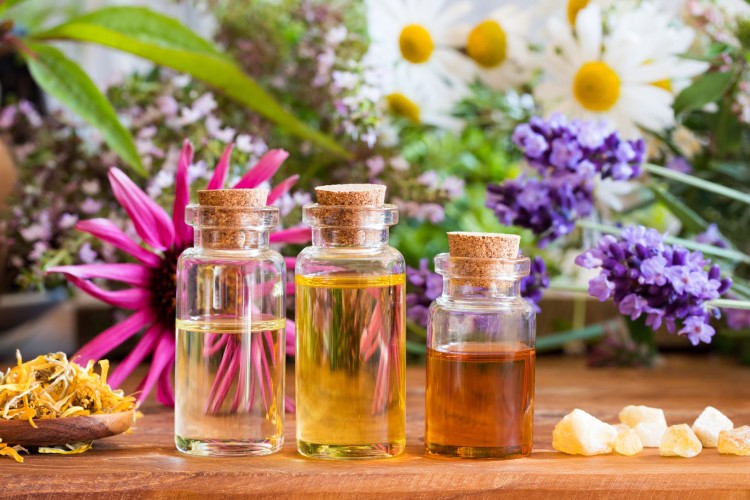
Herbal oils, also known as oil extracts, are obtained from herbs and plant sources; they possess therapeutic benefits. It is well-known that synergistically a combination of nutrients, bioactive components, antioxidants and biostimulants proved to be more effective. These therapeutic compounds can be obtained from herbs using gentle nondestructive oil extraction techniques. There are different extraction techniques like solvent extraction, hydro-distillation, and steam are used for extracting oils. The composition of herbal oils varies depending upon these extraction techniques. Their chemistry is different from each other and the amount of herbal oil also varies from plant to plant and species to species within the same plant. In this chapter, different herbal oils extracted from various plants (citrus, rosemary, oregano, etc.) and their significant therapeutic benefits are reviewed. According to studies, 30% of herbal oils are being used to treat rheumatoid arthritis and joint diseases where as 10% is being used for arthralgia as antiinflammatory. Moreover, 20% herbal oil is used for the treatment for various skin diseases where as 10% used orally to treat and improve the neuro-functioning as neuro-tonics. Gastrointestinal disorders also treated with the use of herbal oils.
In evolutionary terms, plant secondary metabolism greatly contributed to the colonization of terrestrial environments by plant organisms. Indeed, in an ecological context, secondary metabolites relate plants to their ecosystem. Pigments and aromatic compounds confer colour and scent to reproductive organs and fruits, thus attracting pollinators and favouring seed dispersal by animals. However, volatile compounds can also repel phytophagous organisms, including virus and phytoplasma vectors, whereas phytoalexins are broad-spectrum antimicrobial metabolites.
In this complex scenario, humans have greatly benefited from plants and their secondary metabolites. During the plant-human coevolution, plants represented (and represent) a nearly unlimited source of food, feed for domesticated animals, fibres for clothes and, not the least, medicaments. Among the vastness of plant products, essential oils deserve particular attention. These are complex mixtures of hydrocarbons and oxygenated hydrocarbons arising from the isoprenoid pathways, mainly consisting in monoterpenes and sesquiterpenes. Essential oils are produced and secreted by glandular trichomes, specialized secretory tissues diffused onto the surface of plant organs, particularly flowers and leaves.

|

|
Currently, there are no comment.
Login to comment